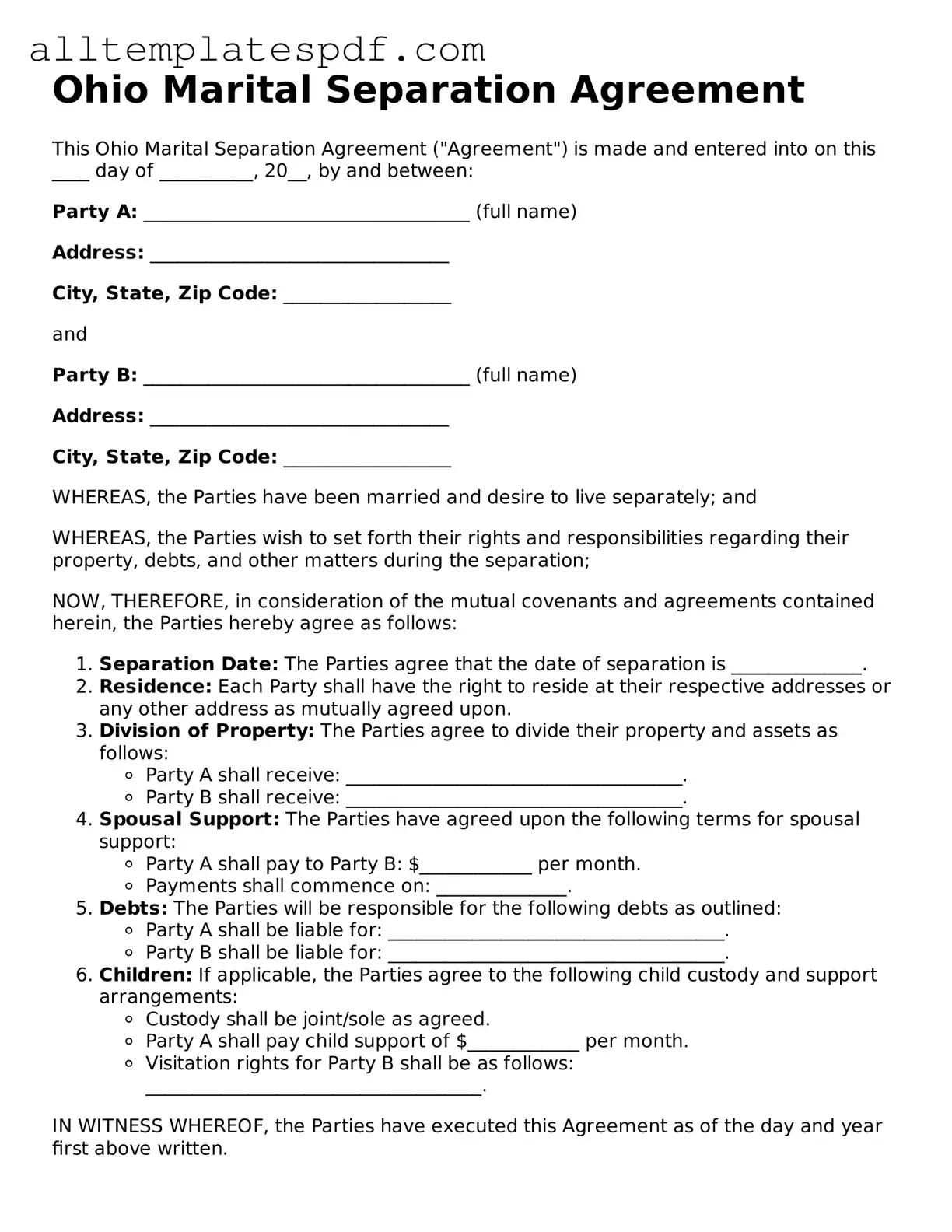Filling out the Ohio Marital Separation Agreement form can be a daunting task. Many individuals make mistakes that can lead to complications down the road. One common error is failing to provide complete and accurate personal information. This includes names, addresses, and dates of birth. Incomplete information can delay the processing of your agreement and create unnecessary confusion.
Another mistake often seen is neglecting to specify the terms of asset division clearly. It’s crucial to outline how property, debts, and other assets will be divided. Vague language can lead to disputes later on. Be specific about what belongs to whom and how any shared debts will be handled.
Many people overlook the importance of including provisions for child custody and support. If children are involved, it’s essential to address their needs in the agreement. Failing to do so can result in misunderstandings and potential legal issues regarding custody arrangements and financial support.
Some individuals forget to consider tax implications when dividing assets. Certain assets may have tax consequences that can affect your financial situation in the future. Consulting with a financial advisor can help clarify these issues before finalizing the agreement.
Another common error is not having the agreement reviewed by a legal professional. While it may seem like a straightforward process, having a knowledgeable person review your document can help catch mistakes and ensure that your rights are protected. This step can save you from headaches later on.
Additionally, people often neglect to include a plan for dispute resolution. Life can be unpredictable, and having a clear method for resolving future disagreements can prevent conflicts from escalating. Consider including mediation or arbitration as options for resolving disputes.
Finally, failing to sign and date the agreement properly is a frequent oversight. All parties involved must sign the document for it to be legally binding. Make sure to check that all signatures are present and that the date is correct before submitting the form.
